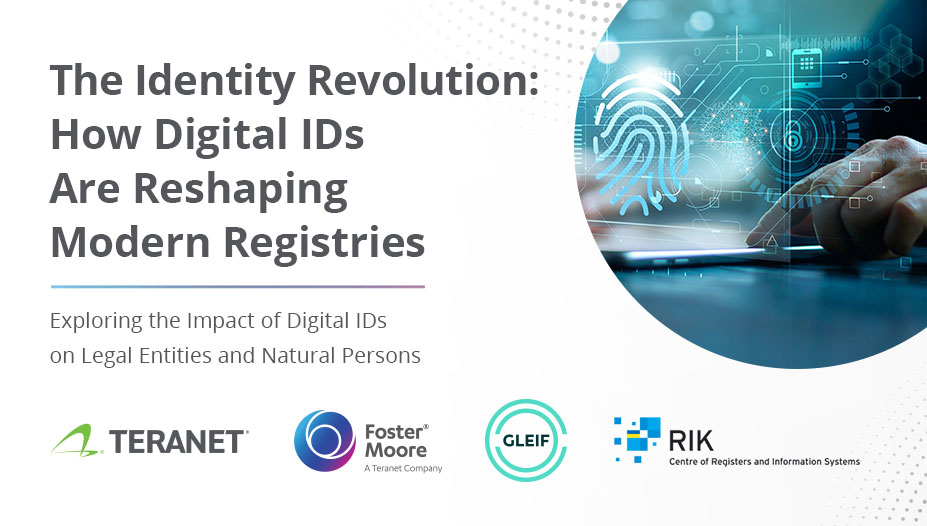In today’s interconnected world, digital ID systems are revolutionizing online authentication for individuals and organizations. ‘The Identity Revolution: How Digital IDs are Reshaping Modern Registries’ highlights the rapid adoption of digital IDs due to their convenience, security, and regulatory compliance in facilitating secure access to government services, financial transactions, and more. Central to realizing these benefits are digital registers, which streamline interactions and reduce costs.
This paper also delves into Legal Entity Identifiers (LEIs), introduced by the G20 after the 2007-2008 financial crisis to enhance transparency and risk management in financial markets. LEIs provide comprehensive reference information, including ownership structures, promoting greater transparency globally. As well, the paper explores the evolving landscape of digital IDs within the European Union with insights from the electronic Identification, Authentication and Trust Services (eIDAS) Regulation, Estonia’s innovative approaches, and an update on developments around the Pan Canadian Trust Framework.
Stakeholders can gain a better understanding around the principles underpinning effective digital identity ecosystems and the critical role of registries and interoperability in their success by examining the legislative and regulatory frameworks, technological innovations, and strategic initiatives detailed in ‘The Identity Revolution: How Digital IDs are Reshaping Modern Registries’.
Authors
Bill Clarke
VP Business Development, Teranet
John Murray
VP Operations, Foster Moore Europe
Ricco Dun
Senior Business Development Manager, Global Legal Entity Identifier Foundation (GLEIF), Switzerland
Tambet Artma
Business Register Team Lead, Centre of Registers and Information Systems (RIK), Estonia





